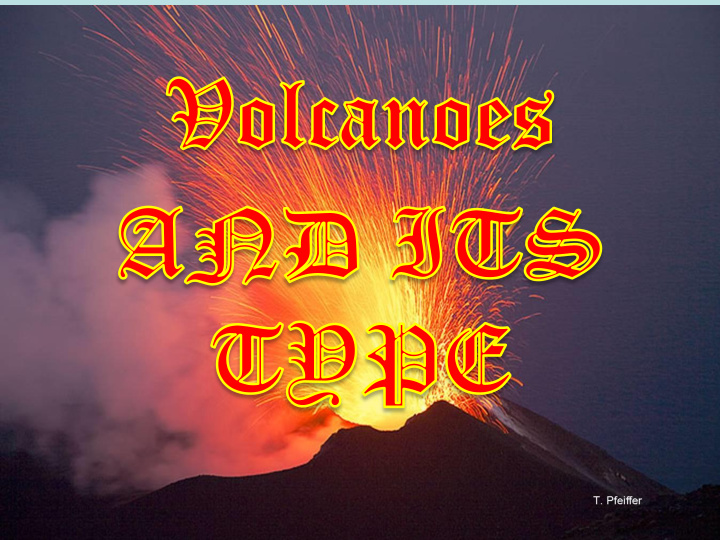



What is a volcano? • A point on the earth’s crust where magma forces its way to the surface • Ash and gases may also escape
Where do they occur? • On subduction zones • On constructive plate boundaries • On hot spots
What types of volcanoes are there? Basa salti ltic c vo volc lcano anoes es Acid id vo volc lcano anoes es • Highly explosive • Less explosive* • Magma/lava is viscous • Magma/lava less viscous (thick) (runny) • Found where oceanic crust is • Found at rift zones (constructive boundaries) and hotspots subducted under continental crust * Continental hotspots are basaltic but potentially highly explosive
Acid (rhyolitic) volcanoes Lava va dom omes Stratovo atovolcanoes lcanoes • Formed of layers of lava high in • Also called composite silica volcanoes • Lava is viscous and does not run • Formed of layers of lava and ashes very far • Lava is viscous • Rounded form • composed completely of lava • Distinct cone shape
Example – lava dome • Mount St Helens - Washington state, USA befo fore re dur urin ing after ter
Example - stratovolcano • Mount Pinatubo, Luzon, Philipines before During … after
Other famous stratovolcanoes Fuji, dormant Vesuvius, active Kilamanjaro, Krakatoa, dormant active
Location of stratovolcanoes • Along subduction zones • Often found in volcanic arcs* • E.g. Cascade range, USA
Ba Basic sic (ba basalti saltic) c) vo volc lcanoes anoes Also known as shield volcanoes Formed of widespread layers of lava low in silica – low viscsity, lava travels very far Low form spread over a great distance
Exa Examp mple le – basi asic c vo volca lcano no • Eyjafjallajökull, Iceland
Ex Exam ample 2 ple 2 • Kilauea, Hawaii
Calderas • Collapsed volcanoes • Magma chamber has emptied and the ground has sunk • Often becomes a lake • New volcanoes can form, or pressure can build from below, lifting the ground • If acidic, this can cause a catastrophic eruption in the form of a ”super -volcano volcano ”
Caldera - Santorini • Destroyed the Minoan civilization due to tsunamis circa 1600BC • May have given rise to the Atlantis myth
Yellowstone national park
Yellowstone is a hotspot
Hotspots • Tectonic plate moves over a magma ”plume” • Occasionally erupts, creating a volcano • Hawaii – basic • Yellowstone - acid
Volcanic hazards • Most hazards during eruptions are caused by what comes out of a volcano • In worst case scenarios then a volcano may violently explode
Hazards – ash clouds • Slow moving • Weight of ash can collapse buildings • Destroys crops, pollutes water • Affects air traffic • Can enter high atmosphere and cause cooling – disrupting climate
Hazards – lava bombs • Molten rocks thrown out of volcano • Pummice – smaller rocks • Travel short distances • Can start fires
An acid volcano • Potential for violent eruptions • Slow moving lava • Explosions • Hot ash/cinders • Pyroclastic flows • Real danger!
History of eruptions • 1800 BC – destruction of Bronze age settlements – then several more times • 79 AD – destruction of Pompeii • At least 40 times until the last eruption in 1944 – witnessed by allied troops towards the end of WWII • = once every 40-50 years
Buried alive!
Reducing the risks • Round-the-clock monitoring of the volcano – Tremors, gasses, changes in water • Identifying hazard areas – Weak spots, secondary vents, predicting routes of pyroclastic flows • Creating an evacuation plan – Zoning, warning systems, public education
Recommend
More recommend